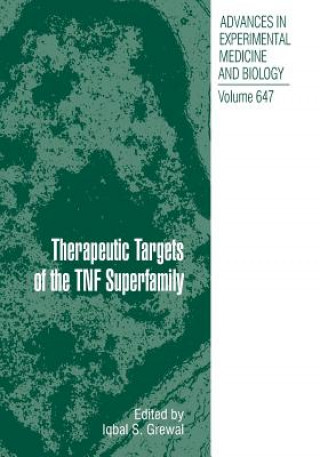
Kód: 01421559
Therapeutic Targets of the TNF Superfamily
Autor Iqbal S. Grewal
Tumor necrosis factor (TNF) superfamily is a rapidly growing family of cytokines that interacts with a corresponding superfamily of receptors. Ligand-receptor interactions of this superfamily are involved in numerous biological pr ... celý popis
- Jazyk:
 Angličtina
Angličtina - Vazba: Brožovaná
- Počet stran: 220
Nakladatelství: Springer-Verlag New York Inc., 2010
- Více informací o knize

5094 Kč

Skladem u dodavatele v malém množství
Odesíláme za 12-15 dnů
Potřebujete více kusů?Máte-li zájem o více kusů, prověřte, prosím, nejprve dostupnost titulu na naši zákaznické podpoře.
Přidat mezi přání
Mohlo by se vám také líbit
-
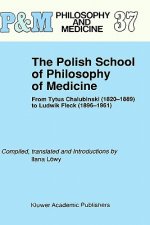
Polish School of Philosophy of Medicine
5094 Kč -

Debate Over Stabilization Policy
1286 Kč -

arq: Architectural Research Quarterly: Volume 4, Part 1
773 Kč -

Community Nutrition: Applying Epidemiology To Contemporary Practice
4245 Kč -

Bible Readings for Caregivers
321 Kč -

Sara
356 Kč -

Medical Tourism
4714 Kč
Dárkový poukaz: Radost zaručena
- Darujte poukaz v libovolné hodnotě a my se postaráme o zbytek.
- Poukaz se vztahuje na celou naši nabídku.
- Elektronický poukaz vytisknete z e-mailu a můžete ihned darovat.
- Platnost poukazu je 12 měsíců od data vystavení.
Více informací o knize Therapeutic Targets of the TNF Superfamily
Nákupem získáte 509 bodů
 Anotace knihy
Anotace knihy
Tumor necrosis factor (TNF) superfamily is a rapidly growing family of cytokines that interacts with a corresponding superfamily of receptors. Ligand-receptor interactions of this superfamily are involved in numerous biological processes ranging from hematopoiesis to pleiotropic cellular responses, including activation, proliferation, differentiation, and apoptosis. The particular response depends on the receptor the cell type, and the concurrent signals received by the cell. Worldwide interest in the TNF field surged dramatically early in 1984 with the cloning and defining of the profound cellular effects of the first member of this family, TNFa. Subsequently, the major influence of TNFa on the development and functioning of the immune system was established. Today, over 20 human TNF ligands and their more than 30 corresponding receptors have been identified. Few receptors still remain orphans. What has emerged over the years is that most TNF ligands bind to one distinct receptor and some of the TNF ligands are able to bind to multiple TNF receptors, explaining to some extent the apparent disparity in the number of TNF receptors and ligands. Yet, in spite of some redundancy in TNF ligand/receptor interactions, it is clear that in vivo spatial, temporal, and indeed cell- and tissue-specific expression of both ligands and their receptors are important factors in determining the precise nature of cellular physiological and pathological processes they control.§TNF superfamily has been the most highly investigated area of basic medical research for over two decades. These investigations have benefited from the enormous growth in our understanding of the principal functions of the immune system and the explosion in the knowledge involved in regulation of normal and pathological immune response. In addition, much has been learned about the molecular mechanisms of programmed cell death and the escape of tumor cells from apoptotic demise and from discovery of the key role played by TNF ligands in this process. As the functioning of these superfamily members is very complex, understanding TNF ligands and their receptor biology requires a mélange of research activities in many different disciplines including organ development, molecular biology, experimental pathology, and immunology. As a consequence of intensive studies in multiple areas over many years, much has been learned. A key role of members of this superfamily in normal functioning of the immune system, autoimmunity, and other fundamental cellular process by which tumor cells develop has been established. Many novel mechanisms involving TNF superfamily members in the disease development process have been defined, and a unified concept and new perspectives have also emerged. For example, abrasions in the innate immune system, so far not considered critical in autoimmunity, have found increasing attention, and TNF-directed and not antigen directed therapy has emerged as the most impressive therapeutic advance in managing autoimmunity in humans. These findings provide a foundation for novel drug design efforts that are poised to utilize newly acquired knowledge. Several of these strategies have already materialized into successful therapeutics such as use of TNF for cancers and anti-TNFa antibodies and TNFR-Fc for autoimmune diseases, and many have advanced to human clinical trials, while many more are still being tested in preclinical settings.§As in other rapidly evolving fields, these advances are not necessarily congruent and are often difficult to organize into a cogent whole. The aim of Therapeutic Targets of the TNF Superfamily is to make readily available the major research important in the exploitation of this family for developing therapeutic strategies for human diseases, in a single volume. Under the auspices of Landes Bioscience, I have undertaken the task to concisely consolidate current knowledge of key TNF superfamily members focusing on both basic aspects and
 Parametry knihy
Parametry knihy
Zařazení knihy Knihy v angličtině Medicine Medicine: general issues Medical equipment & techniques
5094 Kč
- Plný název: Therapeutic Targets of the TNF Superfamily
- Autor: Iqbal S. Grewal
- Jazyk:
 Angličtina
Angličtina - Vazba: Brožovaná
- Počet stran: 220
- EAN: 9781441927996
- ISBN: 1441927999
- ID: 01421559
- Nakladatelství: Springer-Verlag New York Inc.
- Hmotnost: 463 g
- Rozměry: 235 × 155 × 13 mm
- Datum vydání: 22. October 2010
Oblíbené z jiného soudku
-
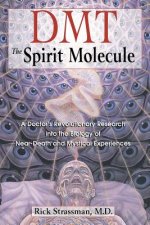
Dmt : the Spririt Molecule
370 Kč -

Bad Pharma
378 Kč -

Deep Medicine
620 Kč -

Basic & Applied Concepts of Blood Banking and Transfusion Practices
3241 Kč -

Oxford Handbook of Clinical Examination and Practical Skills
1084 Kč -

Oxford Handbook of Clinical and Laboratory Investigation
1265 Kč -

EHRA Book of Pacemaker, ICD, and CRT Troubleshooting
3365 Kč -

EHRA Book of Interventional Electrophysiology
3259 Kč -

Fundamentals of Biostatistics
5870 Kč -

Science of Cooking
1977 Kč -
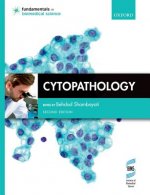
Cytopathology
1842 Kč -

Comparative Physiology, Natural Animal Models And Clinical Medicine: Insights Into Clinical Medicine From Animal Adaptations
3263 Kč -

Immunohematology
3454 Kč -

Pocket Evidence Based Medicine
1481 Kč -
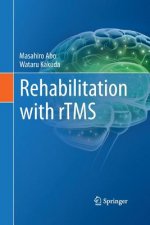
Rehabilitation with rTMS
3313 Kč -

Clinical Chemistry
3313 Kč -
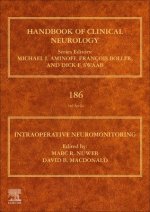
Intraoperative Neuromonitoring
8211 Kč -

Immortal Life of Henrietta Lacks
309 Kč -

Plague
424 Kč -

Anatomic Localization for Needle EMG
1893 Kč -

Rigor Mortis
373 Kč -
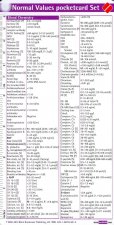
Normal Values Pocketcard
210 Kč -

Maria Treben's Cures
537 Kč -
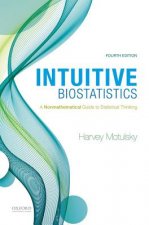
Intuitive Biostatistics
2986 Kč -

Implantable Cardioverter - Defibrillators Step by Step - An Illustrated Guide
2143 Kč -

Politics of Evolution
1735 Kč -

Manual of 3D Echocardiography
2942 Kč -

Making a Spinet by Traditional Methods
435 Kč -
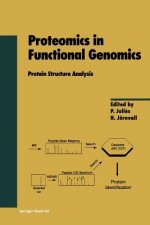
Proteomics in Functional Genomics
6549 Kč -

Connecting Brain Research With Effective Teaching
1575 Kč -

Factories of Death
1386 Kč -

Designing EEG Experiments for Studying the Brain
2437 Kč -

Research in Medicine
1400 Kč -

Tendon Regeneration
4224 Kč -

Bergey's Manual of Systematic Bacteriology
13404 Kč -

Research Methods in Human Skeletal Biology
2454 Kč -

Practical Hemostasis and Thrombosis 3e
3555 Kč -

Histopathology
1410 Kč -

Aesthetic Laser Therapy
7424 Kč -

Urodynamics
3682 Kč -

Bergey's Manual of Systematic Bacteriology
9775 Kč -
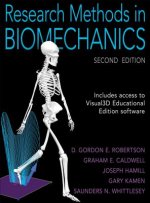
Research Methods in Biomechanics
2749 Kč -

Lung Cancer
3611 Kč -
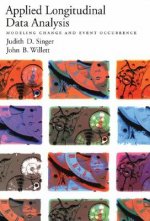
Applied Longitudinal Data Analysis
4670 Kč -

EMG Pearls
2230 Kč -

Molecular Diagnostic PCR Handbook
6875 Kč -

Atlas of Cerebrospinal Fluid Cells
3313 Kč -

Corneal Biomechanics and Refractive Surgery
1681 Kč -
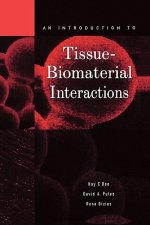
Introduction to Tissue-Biomaterial Interactions
5767 Kč
Osobní odběr Praha, Brno a 12903 dalších
Copyright ©2008-24 nejlevnejsi-knihy.cz Všechna práva vyhrazenaSoukromíCookies


 Vrácení do měsíce
Vrácení do měsíce 571 999 099 (8-15.30h)
571 999 099 (8-15.30h)